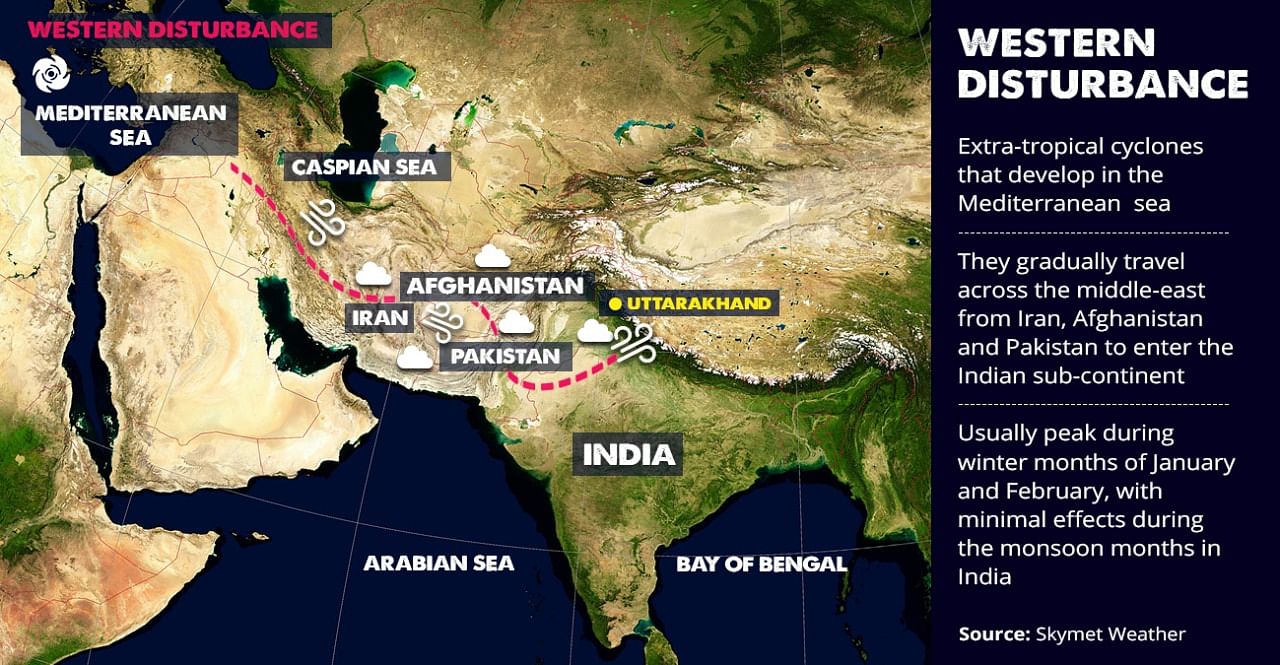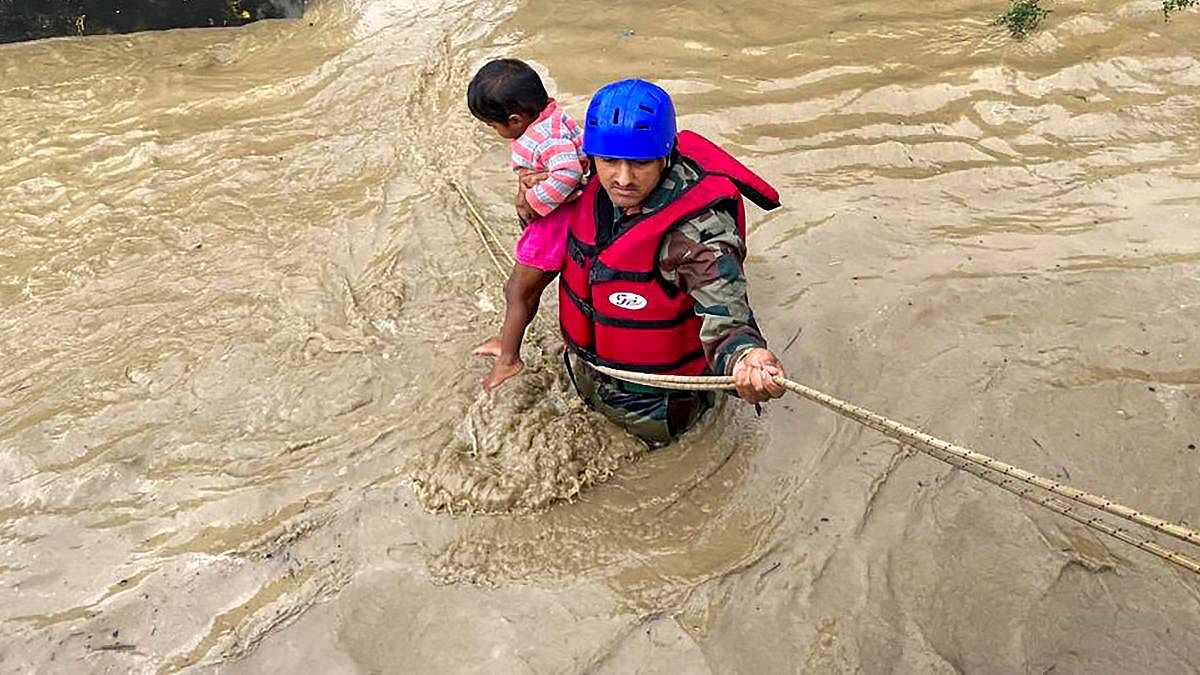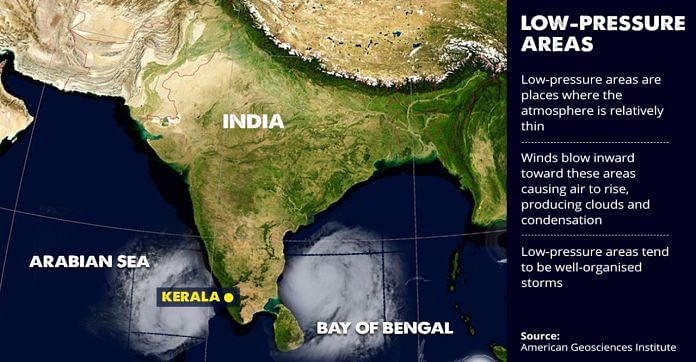New Delhi: Heavy rainfall in Kerala and Uttarakhand over the last few days has left at least 70 people dead and swept away lakhs worth of infrastructure.
Typically, the monsoon season in both states withdraws by the month of September, with the intensity of rainfall dropping considerably. But relentless showers that started after mid-October have raised concerns over a delayed monsoon withdrawal and its relationship to climate change.
“Monsoon withdrawal is primarily a natural phenomenon, but delayed retreating monsoon can sometimes cause more extreme and erratic rainfall. The reason for its intensification is because of microclimatic changes which are triggering and intensifying the monsoon,” Abinash Mohanty, Programme Lead at Council on Energy, Environment and Water told ThePrint.
Microclimatic conditions include factors like land surface temperature, relative humidity, wind and turbulence, dew, frost, heat balance, and evaporation, all of which can influence rainfall.
The recent report by the Intergovernmental Panel on Climate Change (IPCC) has said that India will see even more precipitation and more frequent and intense heat waves in the years to come because of global warming.
An analysis by CEEW in 2020 found that 85 per cent of districts in Uttarakhand were vulnerable to extreme flooding, while over the last decade, Kerala has become twice as prone to landslides as before. The frequency, intensity, and unpredictability of these events has increased in recent decades, the CEEW said.
While experts say the recent rainfall in both states bears the “thumbprint” of climate change, the weather systems involved in causing the rain and subsequent floods are of different origin.

What’s happening in Kerala
Rainfall began in Kerala on 16 October and went on till 18 October, with the worst affected districts being Idukki and Kottayam. A second bout was scheduled on 20-21 October, for which at least 11 districts have been issued a warning.
“On 16th evening and night, a low-pressure area formed in the Arabian Sea which was moving towards the west coast. At the same time, there was another low pressure in the Bay of Bengal which was moving towards Odisha. These two interacted with each other over Kerala which is the reason for high-intensity rainfall,” said K. Santhosh, Director, Indian Meteorological Department (IMD), Thiruvananthapuram.
Low-pressure areas, according to the American Geosciences Institute, “are places where the atmosphere is relatively thin. Winds blow inward toward these areas. This causes air to rise, producing clouds and condensation. Low-pressure areas tend to be well-organized storms”.
“October to December is called cyclone season, so in that sense, it was not unexpected. However, there has definitely been an increase in the number of cyclones and depressions in both the Arabian Sea and on the east coast in the Bay of Bengal,” Santhosh added.
A study by the Indian Institute of Tropical Meteorology earlier this year found that from 2001-2019, the Arabian Sea saw a 52 per cent increase in the frequency of cyclones, which scientists attributed to higher sea surface temperatures.
Worsening the effects of heavy rainfall are fractured ecosystems that can no longer support the erratic downpour, which could contribute to the destruction of infrastructure, lives and livelihoods.
“Kerala has witnessed a two-fold increase in landslides thanks to the degradation of the natural ecosystem in the Western Ghats, among other factors. Forty-two per cent of wetlands, forests, tree cover have been degraded around the Western Ghats, affecting the microclimatic topography,” Mohanty said, adding that these fractured ecosystems are unable to withstand heavy downpour.
Also read: These are the ‘code red’ warnings in IPCC climate change report, & why it matters
‘Western disturbance’ in Uttarakhand
The deluge in Uttarakhand has been attributed by experts to a phenomenon called a “western disturbance”.
A western disturbance is a storm originating in the Mediterranean Sea, which then moves eastwards.

“The western disturbance interacted with south-easterly winds coming from Bay of Bengal which are laden with moisture. The confluence of these two is what caused the heavy rainfall over Uttarakhand,“ said Rohit Thapliyal, Scientist ‘C’ with IMD Dehradun. The worst affected area was Kumaon.
The state is likely to see another western disturbance on 23 October, but the resulting showers are predicted to be “light” and in isolated areas.

Western disturbances are most common during the winter months, said Dr R. Krishnan, executive director of the Centre for Climate Change Research at the Indian Institute of Tropical Meteorology in Pune.
“It seems it (western disturbances) may have come a little early, but we cannot definitely say it was because of climate change. We will need to do further studies to see the extent to which climate change was involved,” he said.
Also read: Taking the lead on climate action could be worth $11 trillion to India
How states can prepare themselves
Mohanty says there are three major ways in which states can help reduce damage from extreme weather events.
“First is to identify compounding risk. It’s important to integrate compounding impacts to understand how heavy rainfall or a cyclone will affect a certain area. Second, states must also work on protecting their natural ecosystems to make sure they are not further degraded. Third, infrastructure should be made climate proof so it can withstand such extreme weather events,” he said.
(Edited by Neha Mahajan)
Also read: 85% world population inhabit areas directly affected by human-induced climate change, study says



